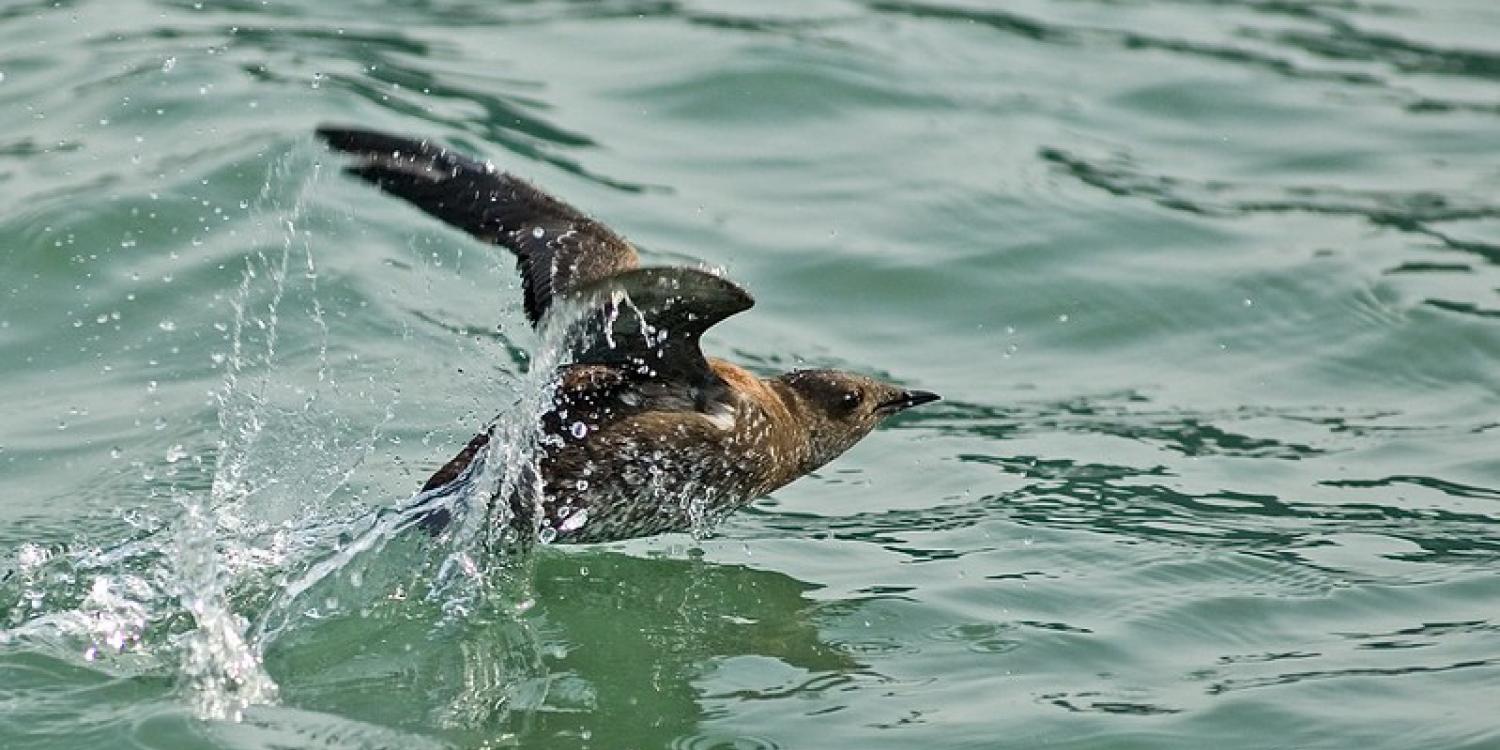
The marbled murrelet — a small seabird native to the North Pacific — is considered a flagship species for healthy ecosystems because it is one of the only birds in the world that gets all of its food from the marine environment but nests well inland in forested areas, sometimes as far as 50 miles from the nearest ocean.
Murrelets are listed as threatened under the U.S. Endangered Species Act in Oregon, Washington and California, yet little is known about the nesting habits of this curious, short-beaked seabird in Oregon.
A better understanding of murrelet nesting habitat is critical for informing tough policy decisions on conservation and active management of coastal forests, according to Jim Rivers, a professor of animal ecology in Oregon State University’s College of Forestry who is leading a multi-year study of the seabird.
Nesting away from the coast makes murrelets unique from their relatives like puffins or guillemots, species that often nest on rock outcroppings along the coast. It also makes them exceptionally challenging to study, and researchers go to great lengths to locate nests.
“We start by capturing the bird at sea during the night when they can be netted from a small boat close to shore,” Rivers says. “We then attach tracking tags, release the birds and use fixed-wing aircraft and a small army of ground-based researchers to traverse coastal forests to find the tagged birds. If all goes well, we narrow the secretive bird’s location to an individual tree where we can closely monitor the nest.”
To help find the cryptic nests, the OSU research team is also working with researchers from a private NGO, Oceans Unmanned, to fly unmanned aerial vehicles (UAVs) with thermal infrared cameras in coastal forests to help locate active nests.
After a successful pilot season in 2016, the research is ongoing and ever expanding. If the project goes well and enough data are collected, the research team will be able to make recommendations to land managers about how murrelet habitat should be managed to sustain murrelet populations.
The research was made possible by an increase in funding for research in the College of Forestry provided by the state Legislature in 2015 with broad support from the timber industry and conservation groups.